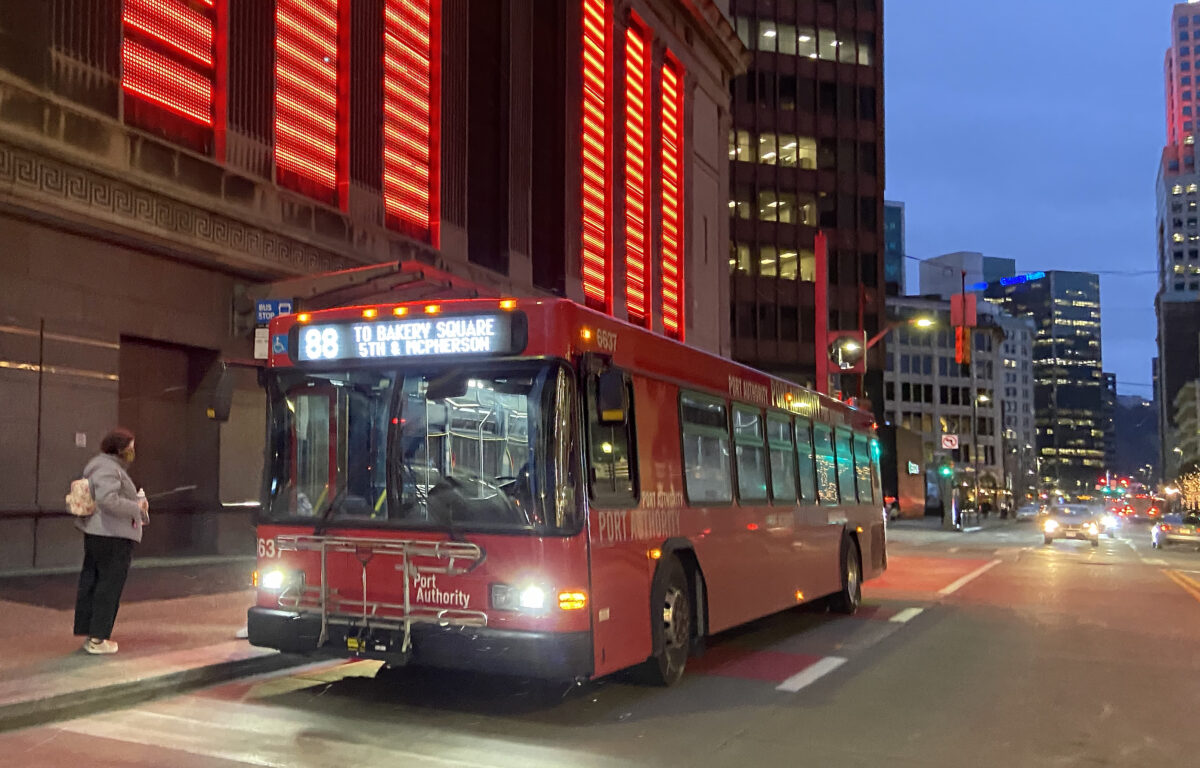Three years from now, Pittsburgh Regional Transit’s bus system probably won’t follow all of the same routes it uses now.
Where buses go, how frequently they run, what time they provide service and what types of vehicles serve those areas all could change.
That’s because the agency has started a 21-month project to review more than 90 bus routes to see if they should serve different neighborhoods to meet different needs. The process will involve about nine months of internal study by staff and consultants of ridership patterns before the agency goes to the public for a series of meetings to get input on recommended changes.
“Our system was built to get people from the suburbs to Downtown Pittsburgh,” Ellie Newman, section manager for service development, told the operating board’s planning and stakeholder relations committee Thursday. “That’s not the only way people travel these days.”
The agency began the process with a private meeting last week with more than 50 federal, state and local officials to brief them on the process. Next week, it will begin a series of public and online meetings to hear from riders.
For now, the only limitation is that the redesign has to be done with the existing level of staff and vehicles.
“We’re designing it with the same number of vehicles and operators so we can deliver what we offer,” Newman said in an interview.
Once it is ready to discuss proposed changes, which also could include changing route numbers, the agency expects to hold about two dozen meetings and pop-up events throughout the county to see what the public thinks about them.
“There’s a huge amount of input that will take place,” Newman said. “We expect it to take several rounds of discussion before we reach the final product.”
The goals of the study are to promote ridership, provide service to new areas and simplify the system, Newman said.
CEO Katharine Eagan Kelleman and Chief Communications Officer Jim Ritchie said in interviews that this is an ideal time for the agency to do the route study because ridership patterns have changed substantially as a result of the pandemic. The system isn’t serving as many riders — it’s still about 35% below pre-pandemic levels — and current riders are using the system more during the day and on weekends rather than the huge spikes that used to occur during morning and evening rush hours.
“We’re all in a new place now, and we need to adapt,” Ritchie said. “People are traveling at different times and going different places.”
Redesigning bus routes was a key recommendation when the agency released its $3 billion, 25-year plan NEXTransit two years ago. Along with extending the light rail system with two wings and expanding the East and West busways, one of the recommendations was to provide local circulating routes to allow riders to travel from one neighboring community to another without having to go to Downtown Pittsburgh and transfer.
Making the changes without expanding staff or vehicles means some existing service will have to be reduced, which never goes over well with the public, Kelleman said, but those tradeoffs can lead to a better overall system. Long-range plans call for an additional maintenance garage, but until that happens the agency is limited in the number of vehicles it can operate.
“Riders who build their lives around the service they have now are going to curse me,” Kelleman said. “But we see folks using the system differently now, so we want to do what we can to serve them, too.”
Several dozen riders showed up at the agency’s monthly board meeting three weeks ago to protest ending four routes in Oakland rather than continuing to Downtown Pittsburgh. The agency said other routes are available in those areas and it needed the service hours in other parts of the system.
Once the study is complete in summer 2025 and recommendations have been vetted, implementation will be a complicated process because riders and operators will need time to become familiar with the new routes. Signs and bus stops also will have to be relocated.
The systemwide study is a follow-up to the agency’s ongoing efforts to adjust how routes pass through Downtown Pittsburgh, where construction has begun on exclusive lanes for the Bus Rapid Transit system to Oakland. That will require moving some non-BRT routes to other streets and gives the agency an opportunity to simplify the system and create closer transfer points for riders who need to take more than one vehicle to their destination.
A few of those changes are in place, but most of them won’t take place until 2024.
The agency will host pop-up tents in Wilkinsburg, McKeesport and Downtown next week to hear what riders would like to see in route changes. It also will hold online meetings at 5:30 p.m. Nov. 14 and 11 a.m. Nov. 16. Registration is required for the online meetings by going here and clicking on “show more events.”
Ed covers transportation at the Pittsburgh Post-Gazette, but he's currently on strike. Email him at eblazina@unionprogress.com.



